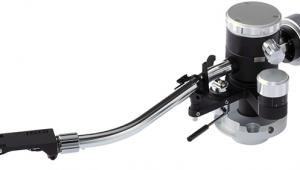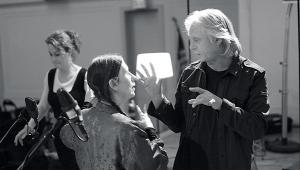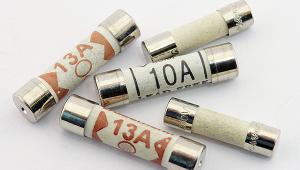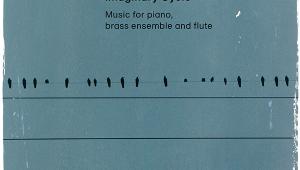EAT C-Dur Page 2
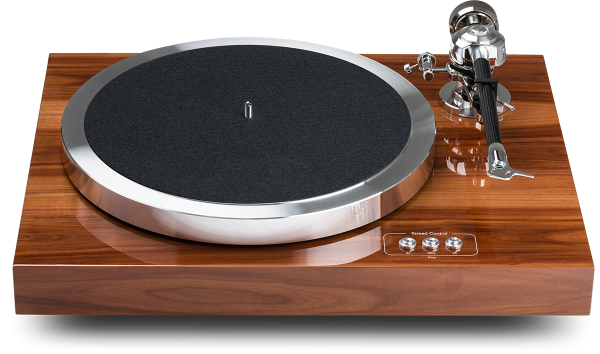
Seen here in its high gloss plum finish, the 50mm MDF plinth supports a 1.8kg stainless steel/ceramic ball bearing block and precision-machined 5.2kg alloy platter. 33.3/45rpm speed selection is via top-mounted buttons.
Instant Reveal
I was delighted to find, via a precision chronograph, that – depending on whether the LP was 140g, 180g or 200g – the C-Dur always achieved the desired speed at a rapid 3.5-4.5sec. This was despite the massive, oversized platter which, by the way, has only one downside compared with 12in or smaller platters: as the mat is thin and some LPs (mainly from the 1970s) lack raised lips around their circumference, you may need to use your fingernails to lift the LP from the platter. Less a criticism and more a fact of audio life, non-suspended decks such as the C-Dur are more likely to be microphonic and so, for best performance, place it on a hi-fi shelf or rack, well away from your loudspeakers.
At the risk of eliciting groans for the clichéd use of The Eagles’ The Long Run, trust me when I tell you that the sound extracted from this amazing pressing was as instantly revealing as anything I might have selected. The kick drum that opens the title track was delivered with such smack, such impact, such force that it even instilled in me increased respect for the rest of the EAT chain, as well as the assorted speakers I employed.
It wasn’t just the power or the scale of this underpinning which dazzled me, despite it rivalling the impressions made by Kodo percussion. Instead, it was the manner of its delivery. What I heard was uncannily soothing on the ear, a balm that was irresistibly more-ish and inviting, which might have some of you thinking, ‘Ah! No top end!’. But that was not the case. What I heard was simply a consistent top-to-bottom presentation shorn of any edginess, while transients remained crisp and the treble extended.
This was communicated repeatedly with every guitar break, the notes precisely defined in attack and decay but with utter fluidity in between. This sense of ease almost pulled me away from focusing on both specific areas of the sound and the overall delivery. What struck me next, then, as the ‘nature’ of the C-Dur, was the absolutely cavernous scale of its soundstage. Even via speakers as disparate as LS3/5As and DeVore O/93s, it was wide beyond the edges, and seamless in between.




























